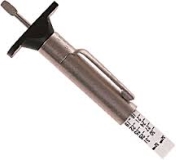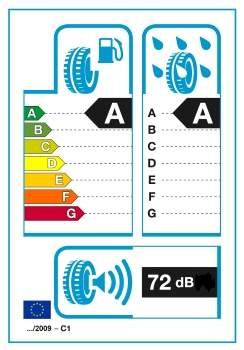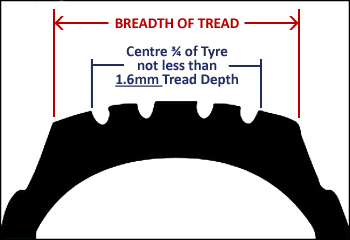
Click the tabs below for some simple steps to follow to ensure you get the most from your vehicles tyres.
 Tyre pressures should be checked every two weeks if possible. You can find your required pressures in your vehicles handbook, sometimes on your petrol cap, on either of the front door pillars or on inner edge of doors.
Tyre pressures should be checked every two weeks if possible. You can find your required pressures in your vehicles handbook, sometimes on your petrol cap, on either of the front door pillars or on inner edge of doors.
If you are unsure TYRE SAVER can help!
Having the correct pressures can help save fuel and potentially let you get the most mileage from your tyres. 
 It is good practice to give your tyre tread depth a check whilst you adjust pressures on your vehicle. There are various factors that can cause uneven wear or quick wear of a tyre, the most common is usually wheels being out of alignment or incorrect pressures being set.
It is good practice to give your tyre tread depth a check whilst you adjust pressures on your vehicle. There are various factors that can cause uneven wear or quick wear of a tyre, the most common is usually wheels being out of alignment or incorrect pressures being set.
Making sure your tyre has enough tread will help reduce braking distances and will disperse water more easily.
The legal limit is 1.6mm for passenger and commercial vehicles, and 1mm for motorbike, HGV’S and agricultural.
TYRE SAVER recommends that tyres should be replaced at 2mm - 3mm.
 Having your wheels balanced correctly can help premature wear of your tyre whilst reducing stress on suspension and steering components, not to mention the annoying steering wheel vibration.
Having your wheels balanced correctly can help premature wear of your tyre whilst reducing stress on suspension and steering components, not to mention the annoying steering wheel vibration.
Wheel alignment, tracking or geometry as it is referred too, should be carried out when there is uneven or unusual wear on your tyres, also if the vehicle is pulling or wandering on roads.
Unfortunately TYRE SAVER cannot carry out this procedure, but will advise and give you an unbiased and honest opinion in where is suitable to have your vehicle alignment carried out.
 On the left hand column of the label you will notice the fuel pump symbol, this is the tyres rolling resistance grade. The letter A would be your lowest rolling resistant tyre therefore using less fuel.
On the left hand column of the label you will notice the fuel pump symbol, this is the tyres rolling resistance grade. The letter A would be your lowest rolling resistant tyre therefore using less fuel.
Compared to G which has the highest rolling resistance, and again would have the higher fuel consumption. You could save up to £80 a year by running A rated tyres compared to G which would consume an extra 7.5% of your fuel.
The right-hand column shows a rain cloud symbol, this is the wet grip grade. The same principle applies with the grading, A being the best grip and G being the worst.
You can stop up to 18 metres shorter or 4 cars lengths from 50mph on wet roads with the A rated tyres. That’s a big distance!
Finally the bottom column shows a sound wave which is the tyres external road noise.
 Law in the UK requires that your vehicle is fitted with the correct type and size of tyre for the vehicle type you are driving and for the purpose it is being used. This means fitting the right tyres and for safety ensuring that they are inflated to the manufacturer's recommended pressure.
Law in the UK requires that your vehicle is fitted with the correct type and size of tyre for the vehicle type you are driving and for the purpose it is being used. This means fitting the right tyres and for safety ensuring that they are inflated to the manufacturer's recommended pressure.
The legal limit for minimum depth of the tread on your tyres is 1.6 millimetres, across the central ¾ of the tread around the complete circumference of the tyre.
 The tread compound of a winter tyre contains more natural rubber and an increased groove ratio than a summer tyre meaning it does not harden when it's cold and can mantain an excellent grip in snow, ice and wet road conditions.
The tread compound of a winter tyre contains more natural rubber and an increased groove ratio than a summer tyre meaning it does not harden when it's cold and can mantain an excellent grip in snow, ice and wet road conditions.
The flexibility in low winter temperatures (below +7°C) helps to reduce the stopping distance and maintain essential grip on snow and ice as well as on wet roads in cold conditions.
Copyright © 2015 - All Rights Reserved - Tyre Saver
Web Site by  with an OS Template
with an OS Template